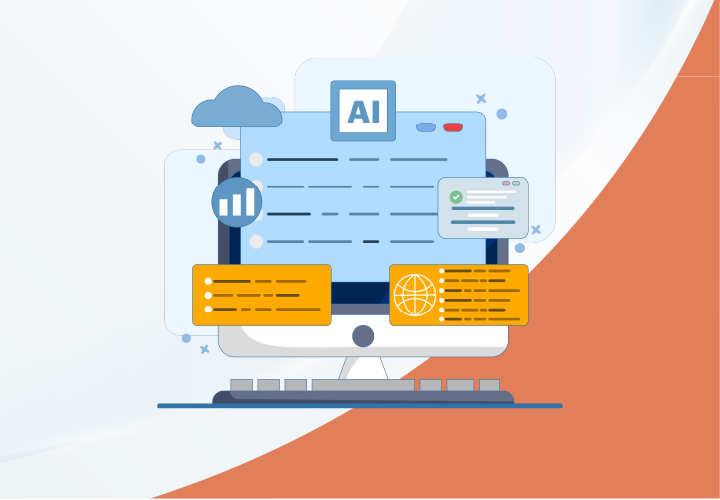Full-Stack Web Application Development with AI Integration Internship Program
in MCAAbout this course
Full-Stack Web Application Development with AI Integration Internship Program: 6-Week Structured Learning and Experience
Introduction
Full-stack development involves building both the frontend and backend of a web application, while AI integration enhances interactivity, automation, and intelligence in modern applications. This internship program provides hands-on experience in developing scalable, AI-powered web applications using React, Node.js, Flask/Django, and AI APIs. Participants will work on real-world AI features like chatbots, image recognition, and NLP-based search, culminating in a fully deployed AI-integrated web application.
This program is ideal for aspiring full-stack developers, AI enthusiasts, and software engineers who want to gain expertise in end-to-end web development and AI implementation.
Program Highlights
Week 1: Foundations of Full-Stack Development & AI
· Full-Stack & AI Overview: Research the role of full-stack development and AI in modern applications.
· Environment Setup: Install Node.js, React, Python, Flask/Django, VS Code, Git, and Postman.
Week 2: Building the Core Web Application
· Frontend Basics (React): Create a responsive UI with React, including Home, About, and Contact pages.
· Backend API Development: Build a RESTful API for user management (CRUD) using Node.js or Flask/Django.
· Database Integration: Store user data in MongoDB, MySQL, or PostgreSQL, with schema design and data persistence.
Week 3: Security & AI Feature Integration
· User Authentication: Implement JWT-based authentication for user registration and login.
· Chatbot Integration: Add an AI-powered chatbot using Dialogflow or OpenAI API.
· Image Recognition Feature: Enable image analysis using TensorFlow.js or Clarifai API.
Week 4: AI-Powered Search & Full-Stack Integration
· NLP-Based Search: Develop a smart search feature using spaCy or a GPT-based API.
· Frontend-Backend Connection: Link the frontend UI to backend APIs using Axios or Fetch.
· Optimizing AI Responses: Improve AI response times, error handling, and performance tuning.
Week 5: Deployment, Testing & UI Enhancements
· Deployment & Hosting: Deploy the application on Heroku, Vercel, or Render.
· Testing & Debugging: Perform unit and integration tests with Jest, Postman, and manual testing.
· UI/UX Enhancements: Collect user feedback and implement design improvements.
Week 6: Final Project – AI-Enhanced Web Application
· Complete Full-Stack AI Application: Finalize all features and ensure seamless AI integration.
· Documentation & Demo: Prepare a detailed project report (1000+ words) and a 5-minute demo video showcasing all functionalities.
Expected Outcomes
By the end of this internship, participants will:
· Develop a full-stack web application using React, Node.js, Flask/Django, and PostgreSQL/MongoDB.
· Integrate AI features such as chatbots, image recognition, and NLP-based search.
· Build a secure authentication system using JWT tokens.
· Optimize and handle AI responses effectively in real-time web applications.
· Deploy a production-ready AI-powered web app on cloud hosting platforms.
· Perform unit and integration testing to ensure a robust application.
· Present a final AI-enhanced web application, complete with a project report and demo video.
Requirements
Laptop
Internet Connection
Comments (0)
To gain foundational knowledge about full-stack web development and understand the significance of AI integration in modern applications.
To install and configure the necessary tools for full-stack development and AI integration.
To create a responsive and modular frontend user interface using React with routing functionality.
To create RESTful API endpoints to handle CRUD operations for users and items.
To create a database schema and integrate it with the backend for persistent data storage.
To secure the application with user authentication using JWT and password hashing.
To create an interactive chatbot interface and integrate it into the frontend using an AI platform.
To allow users to upload images and receive AI-generated analysis or labels using an image recognition model/API.
To build a search bar that uses natural language input and returns relevant results.
To connect frontend forms/pages to backend APIs for dynamic interaction.
To optimize performance and reliability of AI features for smooth user experience.
To make the application publicly accessible via cloud hosting platforms.
To ensure code reliability via testing and systematic debugging.
To refine the UI based on real-user feedback for improved user experience.
To showcase the entire project development and features with a formal report and demo.









